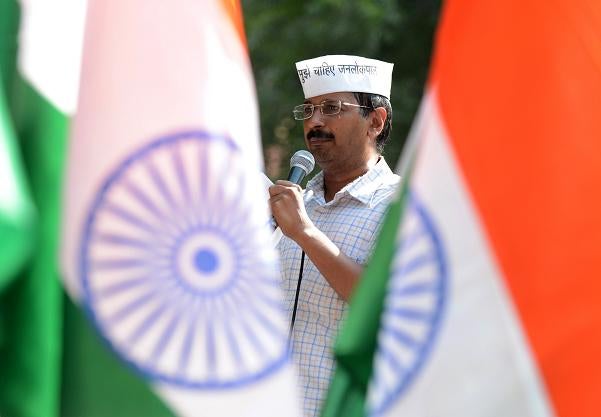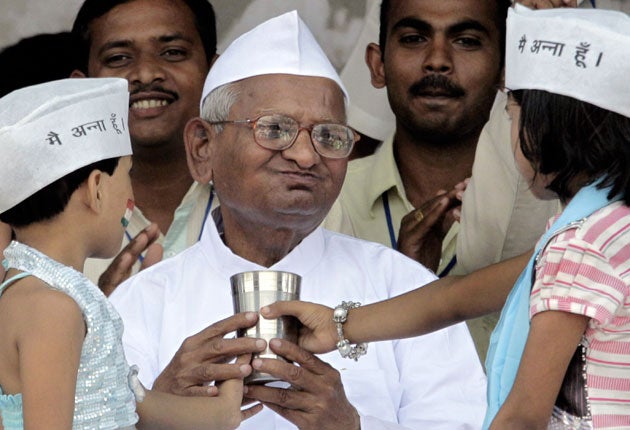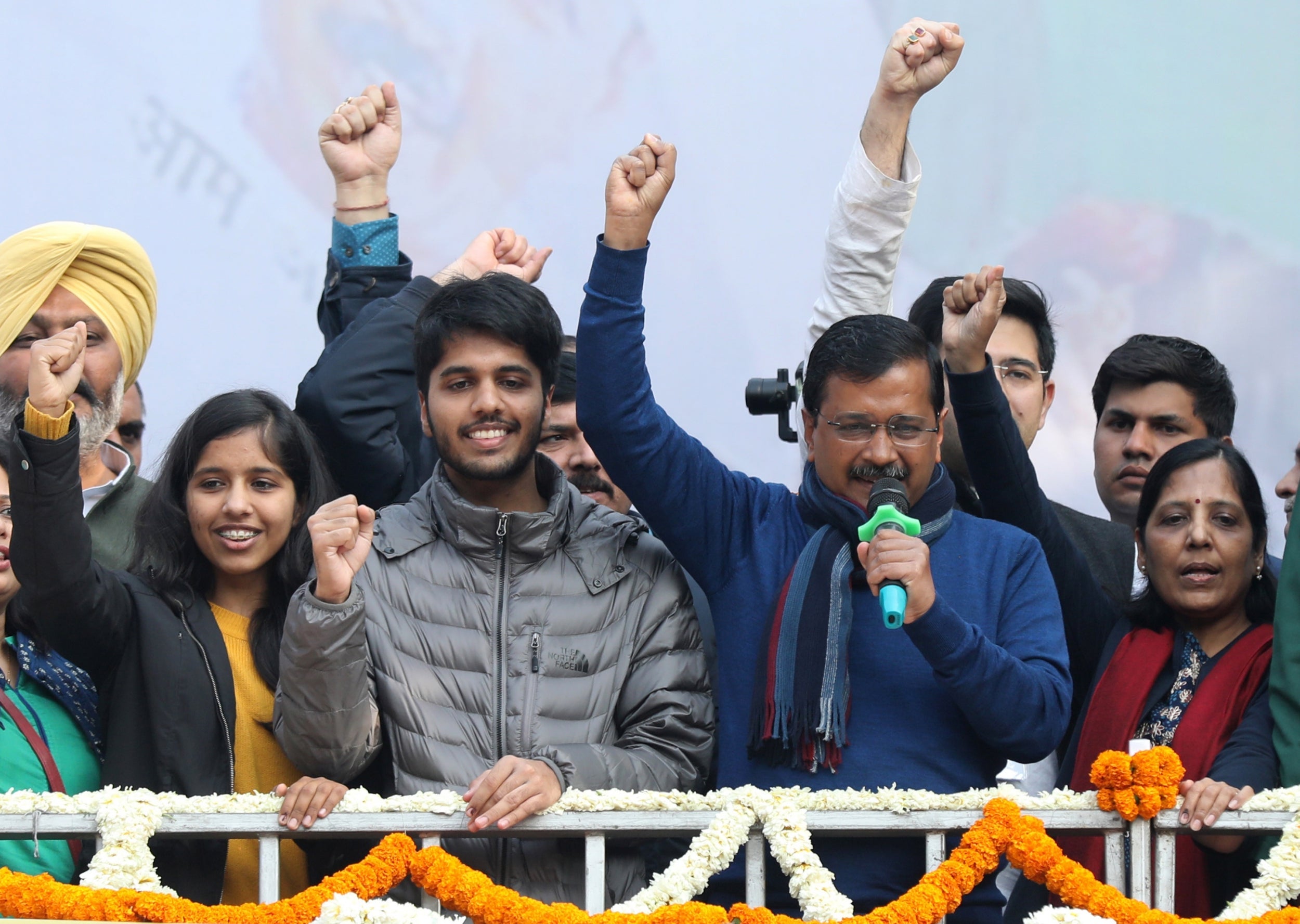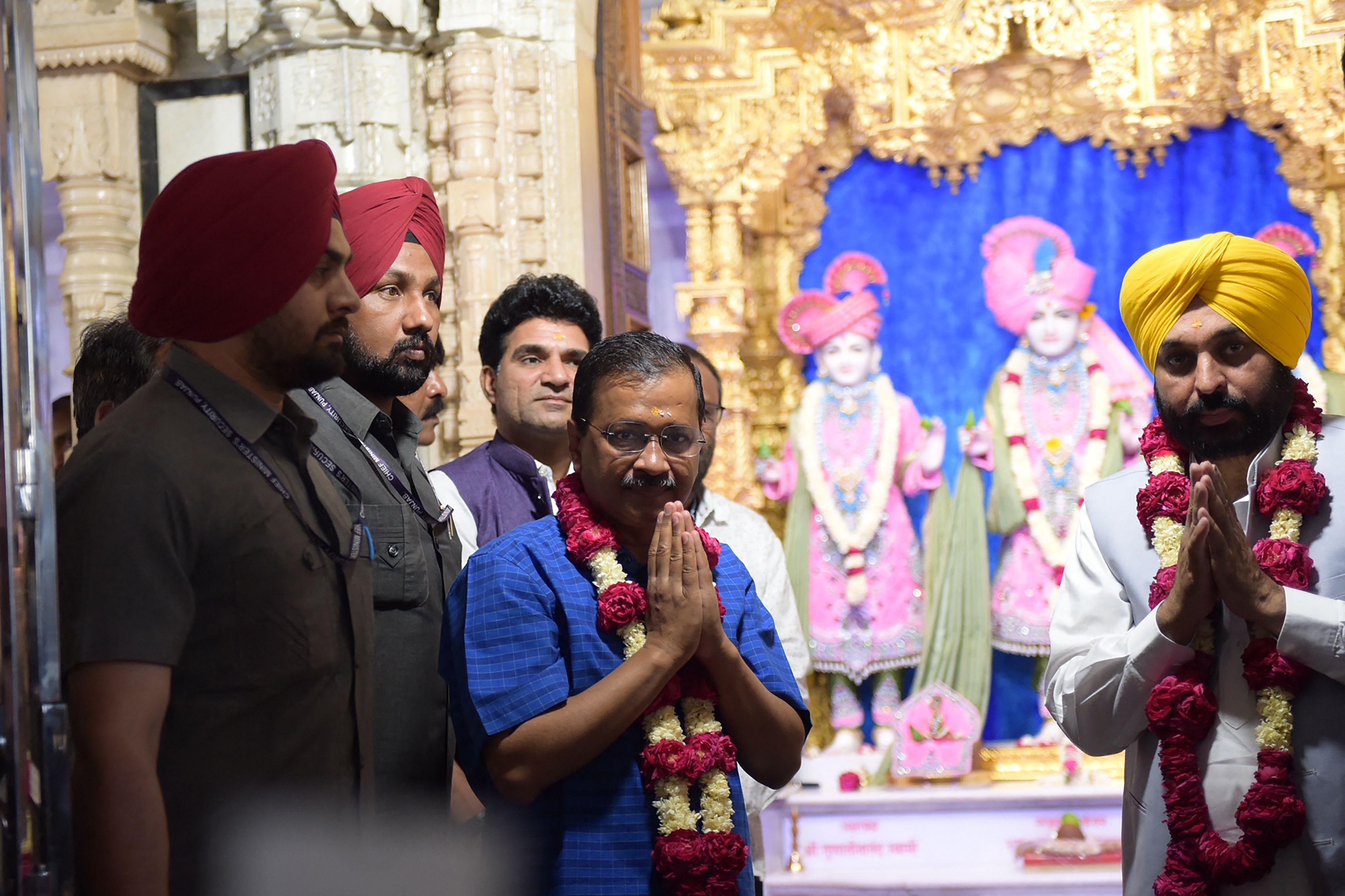Is the Aam Aadmi Party on course to become India’s next main political opposition?
The AAP is eyeing the role of a key national player, with Kejriwal as a possible challenger to Modi, as the party expands its footprint across the country, Sravasti Dasgupta reports

Delhi chief minister and Aam Aadmi Party (AAP) founder Arvind Kejriwal made the bold declaration early last month that his political outfit would not align with any other party for the upcoming national elections.
The announcement revealed a risky approach, unlike any other taken by the opposition, to deny prime minister Narendra Modi and his Bharatiya Janata Party (BJP) a third term in power from 2024.
The comments underline the AAP’s ambition to position itself as the alternative to the ruling BJP in India, right after it became the only regional party in the country to hold power in two states, passing a litmus test that proved its national aspirations.
The AAP, which is kickstarting its political machinery to expand to other states, celebrated a resounding victory against the BJP in the recently held elections in Punjab.
But Kejriwal, who often likes to position himself as the prime challenger to Modi, also said, tellingly, that he did not want “to defeat anyone”.
“I don’t understand alliances of 10 and 20 parties to defeat anyone. I don’t want to defeat anyone, I want the country to win. I will only enter into an alliance with 130 crore people of the country [1.3 billion, roughly the population of India] to make India number one in the world,” he said.
He made the comments while delivering a lecture on “AAP and its role in 2024 Lok Sabha elections”, in Nagpur, the city that is home to the headquarters of the right-wing, paramilitary organisation Rashtriya Swayamsevak Sangh, of which the BJP is the political arm.
Though buoyed by its election victory in Punjab in March, the AAP, barely a decade old, has been roundly attacked by its critics, who have accused it of breaking away from its initial anti-corruption crusade, saying that the party is not an alternative to the BJP – just a softer version of it.
While the Hindu-nationalist ruling party boosted its electoral credentials by winning in four of the five states that went into election mode in March – including the most populous, bellwether state Uttar Pradesh – it was in Punjab that the AAP, and not the other opposition parties, managed to halt the BJP juggernaut.
Born out of the India Against Corruption (IAC) movement, which caught the imagination of an Indian middle class that was disillusioned and angry with the Congress Party for its inability to crack down on corruption in 2012, “Aam Aadmi Party” literally translates to the “Common Man’s Party” in Hindi.
The party promised to clean up Indian politics from top to bottom. Its website says it wants to “end corruption from the system and put forth a model of alternative politics”.
It was formed by a group of activists who had initially been part of the IAC, led by conservative activist-reformer Anna Hazare. When a split emerged within the movement, Kejriwal left to form the AAP.

In its election debut in Delhi in 2013, the AAP brought down the Congress Party’s three-term government, reducing its seat tally to just 8 out of a total of 70.
The AAP won 28 seats in the state assembly, but its first stint in power lasted only 49 days, as Kejriwal stepped down after failing to pass an anti-corruption bill.
Fresh elections in Delhi were postponed because of general elections due the following summer, and the party decided to field 400 candidates in seats across the country, but managed to win only four seats – all in Punjab.
The 2014 elections also featured a direct fight between Kejriwal and Modi in the holy city of Varanasi, which predictably led to a win for Modi.
In 2015, however, the AAP scaled back its national ambitions and won a whopping 67 seats in the Delhi assembly on the back of a promise to complete a full term and provide corruption-free governance.
In the following years, the AAP touted its “Delhi model” of governance, with promises of free electricity, and modernising government-run education and healthcare.
In the party’s second foray into national elections in 2019, it won just a single seat out of the 40 it contested in Punjab.
In 2020 – just a month before the Covid pandemic began – Kejriwal returned to power in Delhi with yet another resounding mandate, clinching 63 seats in one of the most heavily polarised contests ever seen in the national capital.

The AAP is again attempting to gain ground in states outside Delhi, ratcheting up its expansion plans in recent weeks ahead of state elections in the northern Indian states of Gujarat and Himachal Pradesh later this year and in Rajasthan, Karnataka and Chhattisgarh next year.
Its win in Punjab has re-energised its hopes of becoming a national party, but has also increasingly put its founder in the spotlight, with his ardent online supporters frequently casting Kejriwal as a hagiographic crusader against corruption.
Speaking to The Independent, party spokesperson Akshay Marathe says that the AAP’s national plans rest on its laurels in Delhi and Punjab.
“Our experience [in Delhi and Punjab] has shown that if you talk about people’s livelihoods, issues of day-to-day functioning, especially in post-pandemic times when there are no jobs [and] inflation is high – these issues resonate with people,” he says.
However, there seem to be signs of the party shifting its goalposts from its anti-corruption stance at the same time as what Marathe terms the “disgust with [the] legacy parties” – the BJP and Congress.
This “disgust” is not limited to Delhi and Punjab, says Marathe, referring to the “Delhi model” as the “Kejriwal model”.
“There is a vacuum due to these traditional parties, which AAP is hoping to fill, and there is a demand for it, as people want the Kejriwal model,” he says.
In an interview with NDTV soon after the party’s victory in Punjab, Kejriwal said the party’s “model” was based on three pillars: honesty, patriotism and humanity.
Marathe agrees: “The Kejriwal model of governance surrounds these three pillars.
“If you look at our idea of nation-building, we believe in ensuring that education and healthcare are available to everyone; that people’s ability to live their lives is better through free water and power,” he says, adding: “Ensuring corruption-free governance is the goal of the Kejriwal model.”
In the last decade, however, it appears that the AAP has abandoned its anti-corruption fight, along with the real promise of an “alternative”.
One of Kejriwal’s most prominent ministers – Delhi home minister Satyendar Jain – was arrested in May by federal authorities investigating a money-laundering case, in an incident that the AAP said was part of the BJP’s vendetta politics.
“They have completely forgotten the ideals they wanted to pursue,” says former AAP leader Ashutosh.
“Their most important plank was that this would be an anti-corruption movement. But today, if you look at their MLAs [members of legislative assemblies, or state-level lawmakers], even they cannot claim to be corruption-free,” he says.
A report in the Hindustan Times reveals that half of the 117 legislators elected to the Punjab assembly last month have previously been implicated in criminal cases, with one in five MLAs having faced serious charges, including murder, crimes against women, and illegal mining.
Among these are 19 AAP legislators with serious cases against them.
An analysis undertaken by non-profit organisation the Association for Democratic Reforms in 2020 revealed that 61 per cent of the AAP MLAs elected to Delhi’s assembly in 2020 had declared criminal cases on their election affidavits.
“They used to say ministers should stay in two-room flats, but now all of them are living in palatial bungalows. They denounced security for public servants, but now the chief minister himself is surrounded by over 100 commandos,” says Ashutosh.
“They no longer are a political party for which they were known.”
Concerns have grown that the AAP’s most distinctive shift has been cosying up to majoritarian, soft-Hindutva politics.
After riots in Delhi’s Jahangirpuri and a subsequent demolition drive by BJP-led municipal authorities in April, the party’s communal narrative took a significant leap after Atishi, a member of AAP’s political affairs committee, and Manish Sisodia, its deputy chief minister, blamed Bangladeshi Muslims and Rohingyas for the civil disorder.
“You will get to know where the next riot will take place if the BJP gives a list of the areas where it has got Rohingyas and Bangladeshis settled illegally,” Sisodia said.
The party also blamed the BJP for the riots in northeast Delhi in 2020, when 52 people – mostly from the minority Muslim community – were killed.
“The party’s position is very categorical and strong against the BJP’s role in propagating violence across the country,” says Marathe. “BJP is a party of thugs and goons, and it is promoting a culture of violence by encouraging its own political workers to destroy property and wreak havoc in the country.”
He continues: “We saw an example of this when the people responsible for vandalism outside the chief minister’s house were garlanded by the BJP at their Delhi office.
“When it comes to Jahangirpuri, the specific allegation that the AAP was raising was that if you look at Adesh Gupta’s [Delhi BJP chief] letter, it is clear they have blamed the Bangladeshis and Rohingyas for the violence.”
In the past, the AAP’s outreach to majority Hindus also included government funding of pujas (prayer meets) and teerth yatras (pilgrimages) at the taxpayer’s expense.
“There is no soft or hard Hindutva, as Kejriwal has already said,” says Marathe, referring to a “tradition” of Hinduism instead.

Rahul Verma, fellow at the Centre for Policy Research and visiting assistant professor at Ashoka University, says the AAP’s actions need to be understood in the context of a BJP-dominant party system in India.
“What a dominant system does is that it forces other parties to mirror its policies. Because the BJP is riding on a wave of Hindu majoritarianism and hyper-nationalism, most other parties will mirror this,” he says.
According to Sanjay Kumar, a psephologist and professor at the Centre for the Study of Developing Societies (CSDS), while the AAP may not be much different from the BJP, it enjoys the power of perception.
“A large number of voters think AAP is an alternative to BJP. A very tiny section analyse policies, manifestos, and figure out whether AAP is really different, because both are playing the Hindutva card in a subtle manner,” says Kumar.
“There is a general perception that they have governed Delhi well, without looking at each and every promise that AAP is making.”
Observers believe that despite the traction created by the AAP, it is too early for the party to take on the mantle of national opposition in 2024.
“Congress has lost elections in the past, but the loss of faith in the party is a new and unique phase in Indian politics, where people have started looking at a small regional party like the AAP as an alternative,” Kumar says.
What is also working in the AAP’s favour is the perception that it is better than the traditional parties. “Between 2012 and 2015, the AAP was seen as unlike any traditional political party,” says Ashutosh.
The path to 2024 and the role of national opposition is also fraught with organisational challenges.
“In the last few years there have been three parties – Congress, AAP and TMC [the outfit of India’s only female chief minister, Mamata Banerjee] that have been vying for the second spot,” says Verma.
“Even if AAP wins a few seats in Delhi, Punjab, Goa, Himachal and wherever it is expanding, it would be difficult for the party to cross 30-35 seats nationally,” he points out.
Analysts also say that the party is still in its nascent form, compared with the BJP’s organisational might.
“If there is no big issue, then a party has to work hard and develop party structure and be patient, and cannot rise overnight. That cannot happen, for instance, in states like Himachal Pradesh, where it would be their first election,” says Kumar.
“It is a long journey. In Punjab, also, it took them eight years to win the state. Its future as national alternative is bleak for 2024, but bright for 2029.”
Join our commenting forum
Join thought-provoking conversations, follow other Independent readers and see their replies
Comments
Bookmark popover
Removed from bookmarks